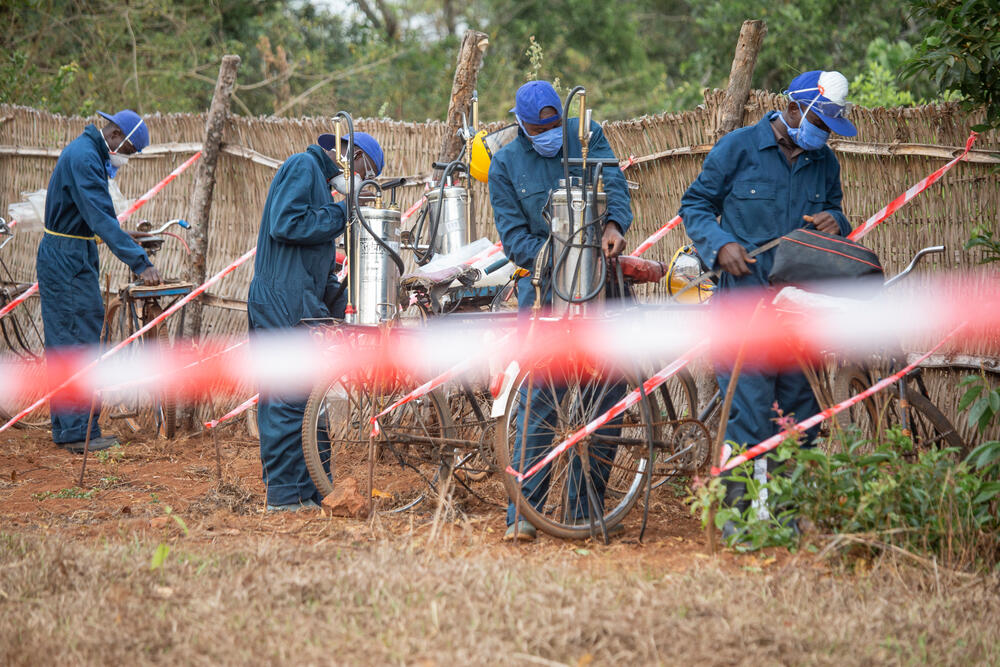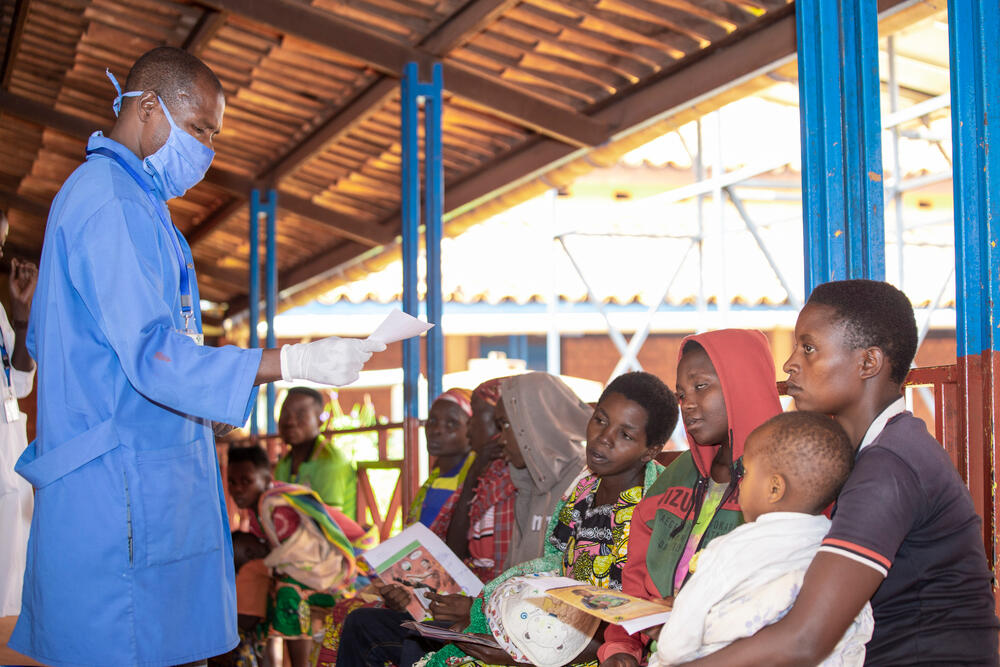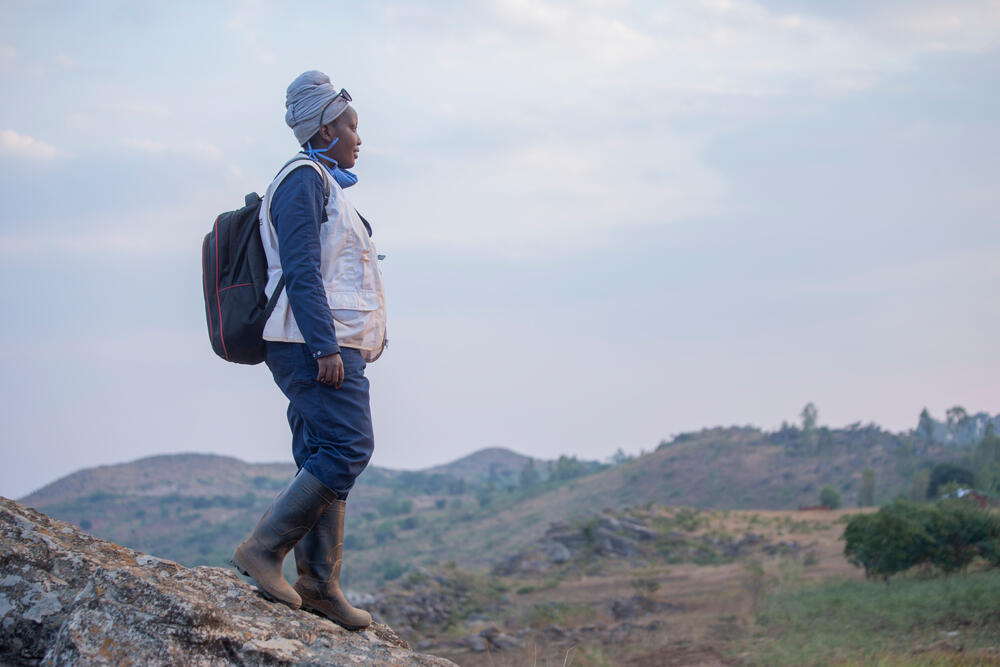Sprays, bikes and satellites: How MSF is fighting malaria in Burundi
In the hills of Kinyinya in eastern Burundi, a team from MSF have been carrying out a massive malaria prevention campaign. Their objective: attack the disease at its source.
"Come back and visit us!"
Standing outside his house, surrounded by piles of his possessions, Benoit Misago says goodbye to the Médecins Sans Frontières / Doctors Without Borders (MSF) team. They have just treated his home with a spray that kills mosquitoes, and he watches as they cycle on to the next house, bottles and pumps on their backs.
This is the second time in two years that Benoit has had his house treated by an MSF anti-malarial spraying team.
“We had a very big malaria problem here in Kinyinya district,” says Benoit.
“Mosquitoes were flying everywhere. Children and adults were sick all the time. There were so many people in the hospital that we sometimes spent all day there.”
“Fortunately, all this stopped after their visit. So, I'm glad to see them again today."
An 80-percent drop
Malaria is a major health problem in Burundi. The disease is endemic, with regular outbreaks making it the leading cause of hospitalisation and death in young children.
The situation is the same across many African countries. Each year, more than 90 percent of the 400,000 global malaria deaths are recorded on the continent.
Prevention remains key, involving the use of antimalarial drugs and physical protection from mosquitoes such as nets and enhanced sanitation.
Indoor residual spraying is one of these techniques. Successfully used across the world, it consists of applying an insecticide to the walls and ceilings of buildings, killing mosquitos that rest there. Lasting for months at a time, spraying can help drastically reduce malaria cases.
"Last year, the spraying was a key factor in the 80-percent drop in malaria cases here," says Dr Hippolyte Mbomba, MSF's malaria project manager in Kinyinya district.
"But the spraying must be prepared, carried out and repeated in an extremely meticulous manner. This technique cannot be improvised."
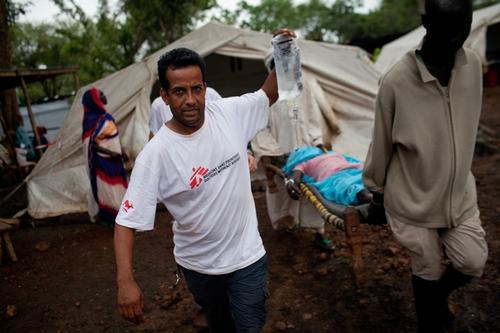
Help us prepare for the next emergency
“Come and spray!"
It takes MSF and the health authorities several months to prepare each spraying campaign. They need to select which insecticide to use (to avoid mosquitos developing resistance), spread information throughout local communities, plan the logistics, and recruit and train teams.
“Kinyinya district has more than 68,000 homes scattered across the hills," continues Dr Mboma.
“You need to treat at least 85 percent of these homes. It takes incredible organisation and energy.”
Jeanine Arakaza, who supervises one of the 78 spraying teams, knows it is important to involve the community.
“Last year was the first time we sprayed homes here, and there were obviously quite a few questions. We ran a lot of information sessions, and in the end we managed to treat 95 percent of homes,” she says.
“This year, everyone is convinced. People saw the impact of the last campaign. They follow us and say: 'Come and spray our house, we need you, we don't want malaria at home!'.”
Eco-friendly action
State-of-the-art technical preparation is needed for the campaign to be both effective and environmentally friendly.
"Treating so many houses requires a huge investment in meeting environmental standards and waste management," explains Dr Mboma.
“This is a top priority for us. This year, we have 468 sprayers going up and down the hills treating houses, not counting hygienists, team leaders or storekeepers. So many people to train in dosing, storage, cleaning, environmental management ... It is huge, but absolutely fundamental."
Missing maps
The other big challenge of a campaign like this is to cover so many houses in a short period of time. In Kinyinya, tens of thousands of homes need to be treated in less than a month.
Luckily, the spraying teams have a very valuable technology helping them: MSF’s geographic information systems, also known as "GIS".
"Long before the first sprayer set off on a bicycle, the entire area was meticulously mapped by MSF experts," says Dr Mbomba.
"We carry out aerial cartography on the basis of satellite images processed during 'mapathons', and each house, each stable, each toilet is then listed by sending teams to the field equipped with geolocation devices.
“In this way, we have an exact vision of the number of houses, the topography and the paths available, so that we can plan the interventions and follow the progress day by day."
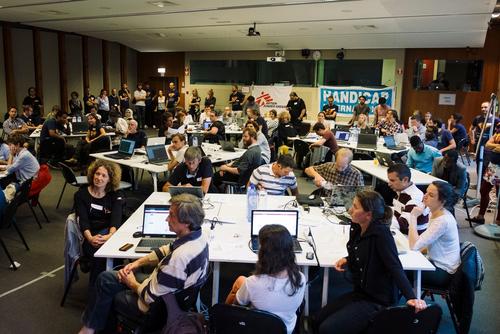
Take part in an MSF mapathon
For Jeanine Arakaza, the daily progress-monitoring sessions are one of the most rewarding moments of her job.
“We come back in the evening exhausted after the day’s work, but then we live a magical moment,” she says.
"On the big screen, we see all the little dots change colour depending on the results of the day. You see everything that has been done by your team, and by all the teams. You see where you have to go back to reach the objectives. And you completely forget the fatigue of the day. It gives you the courage to continue!"
Small victories matter
Reducing malaria and providing free healthcare is saving lives, but it's also helping families in other ways.
“All the money they used to spend on getting treatment, they can now invest elsewhere – on food, for example,” says Jeanine Arakaza.
“This also allows children to go to school and parents to go to work in the fields, instead of constantly coming to the hospital."
The fight against malaria in Africa still has a long way to go. Greater efforts are needed to improve access to tools to prevent, diagnose and treat the disease. But, in the shadow of the overwhelming numbers, small battles are won.
At the end of the spraying campaign in Kinyinya, 98 percent of houses in the area had been treated, protecting more than 311,000 residents for many months to come – until the next spraying campaign in Summer 2021.
MSF and malaria
Malaria is a deadly disease carried by Anopheles mosquitoes.
Every year, it kills around 430,000 people and infects more than 200 million. Ninety percent of these deaths occur in sub-Saharan Africa.
Despite malaria mortality rates falling by 25 percent since 2000, a child in Africa still dies every two minutes from malaria.
